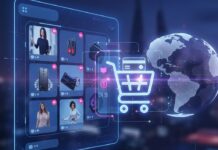In the present digitally advanced era, data is the main driving force of organizations. The use of data in all areas of the business, ranging from customer experience enhancement to the internal operations’ stabilization is of utmost necessity. However, data access also carries risk along with it.
Perhaps you have moved some of the confidential content of the company into a personal file or an AI chatbot just to get the message “Your organization’s data cannot be pasted here.” In that case, you have seen just a short but very important reminder that your organization is already on the way to becoming even safer and more privacy-centric without your awareness. And this is good news.
This article will explain what the words your organization’s data cannot be pasted here really represent, why they are particularly relevant in the present day, and how companies can adopt a more secure, responsible approach to data management.
The Digital Workplace: A Double-Edged Sword
Our people are working in a totally different manner now. Cloud tools, remote teams, and instant communication platforms have made it possible for employees to handle more data. But along with convenience comes the danger of possible misuse.
It looks so trivial to:
- Move a top-secret report into Google Docs.
- Transcribe customer data into an AI tool that gives statistics.
- Take screenshots of the internal dashboards and post them on Slack or WhatsApp.
At first sight, the activities seem absolutely harmless, but in real life, they open businesses to the possibility of data breaches, privacy infringement, and legal issues, which might become the cause of multi-million dollar financial losses.
This is why companies are resorting to virtual barriers blocking these kinds of actions.
Why You’re Seeing the Message: ‘Your Organization’s Data Cannot Be Pasted Here’
The message is not a mere indication of a hazard. It is conceived in a fashion of higher-level cybersecurity data security practices, which build on smart governance and security policies. Here is the plain-speak translation of the message:
- The company has installed Data Loss Prevention (DLP) systems. Such systems mark, control, and keep safe delicate information, notwithstanding it has to do with financial records, customer data, trade secrets, or HR files.
- Platforms like Microsoft Copilot or OpenAI have been given the power to provide some AI safety protocols that are properly integrated into the tools. These AI platforms now come with enterprise safeguards that are in place to prevent unauthorized access to data resources or information by any user.
- Your data is being managed responsibly by the IT personnel, and at the same time, they are protecting your integrity. The situation of information leakage is such that the information may not only be stolen and used maliciously but also be destroyed due to inadvertent actions. In management terms, this message stops the risk before it starts.
Next time you are restricted, keep in mind: the restriction is not a trouble. It’s rather a safety net for your job, your team, and your brand.
Why This Matters Now More Than Ever
1. Your Data is the Most Valuable Asset
Nowadays, enterprises are generating and storing big data on the daily activities of clients and work, competition, and markets. This data is a driving force to make the right decisions, be a step ahead of the competition, and treat each customer uniquely and specially.
One major fault and the company risks losing everything. A small mistake can:
- Be a reason for customers not to trust the company anymore.
- Trigger the production of non-conforming products, which are not accepted by the authorities.
- Destroy the company’s position in the business arena.
- Incite the business to pay a lot of money if it results in a lawsuit.
2. The Impact of AI Tools Is Immense, but the Propensity to Potential Risk Is Closely Related
Generative AI tools such as ChatGPT, Google Gemini, and Microsoft Copilot are really changing the rules of productivity. At the same time, no one knows what happens to data once it is supplied to the black boxes of these tools.
When we upload personal data into an AI software in a web-based environment, such data could be:
- Kept in a database on servers belonging to a third party.
- Used in the training of future AI systems.
- Read and extracted by unauthorized persons other than the owner.
Ways Companies Are Solving the Problem
The “Zero Trust” concept in data security is the new normal for diligent companies. In this way, the approach is to “do not trust, but check everyone.” Here are the respective illustrations:
1. By Utilizing Data Classification
They assign labels to the data of the corresponding sensitivity:
- Public
- Internal
- Confidential
- Restricted
This is one way of ensuring the security level applied is appropriate to the risks.
2. By Developing AI-Enhanced Security Tools
New enterprise security automation tools are AI-driven, so they easily notice the data transfer process. They have the capabilities to:
- Prevent copying data.
- Send warnings to the compliance team.
- Offer alternative solutions to the users.
3. Data Ethics Training for Staff
Yes, it is true that people are “the weakest link” in terms of data security, but on the other hand, they are also the most reliable defence. Currently, organizations conduct periodical workshops to give the staff information about what they should do with their data, such as:
- Which data is considered sensitive?
- The places where data can be shared or not.
- How to make responsible use of AI tools.
What You, as an Employee or Leader, Can Do
If you are a receptionist or a general director, it doesn’t matter what job position you hold- Even a very junior one, you are to receive and ensure security in your company’s IT room:
These are the ways you can be a helper:
✅ Respect the Privacy of the Digital Exclosure Created by Others
In case you know a tool which would help you in your own work and were blocked before, do not try to look for a way. Knowing another working tool is a sign of danger. Instead, select the channels or media forms which have been approved for use.
✅ Employ Only CO’s AI Tools
Given that your organization offers you the possibility to use the AI of Microsoft Copilot, please ensure you employ it instead of the public one. The CIs of these systems conform to the organization’s data security policies.
✅ Be the Flagbearer of Data Literacy
One important point is learning as well as teaching your fellow workers and the team at large. This is paramount to the success of all operations. Data Governance, being a province of IT alone, is now a thing of the past; today is the time for data literacy for all.
Conclusion: Privacy is Productivity’s Partner, Not Its Enemy
The phrase “your organization’s data cannot be pasted here” might seem like an obstacle at first. However, these cautionary notes actually reveal the organization’s maturity, its seriousness, and its proactive approach.
In a digital era where a single screenshot can be for everyone worldwide, or a bit of code is enough to reveal trade secrets, companies must secure the most important asset to them—their data. By setting up adequately designed systems, and by providing the right tools and education to their employees, they are paving for a future where technology benefits security and vice versa.
So, when you observe the same little message popping up next time, show a wide smile. It is a sign that your team is already using preventive methods to keep data safe, secure, and in its place.






